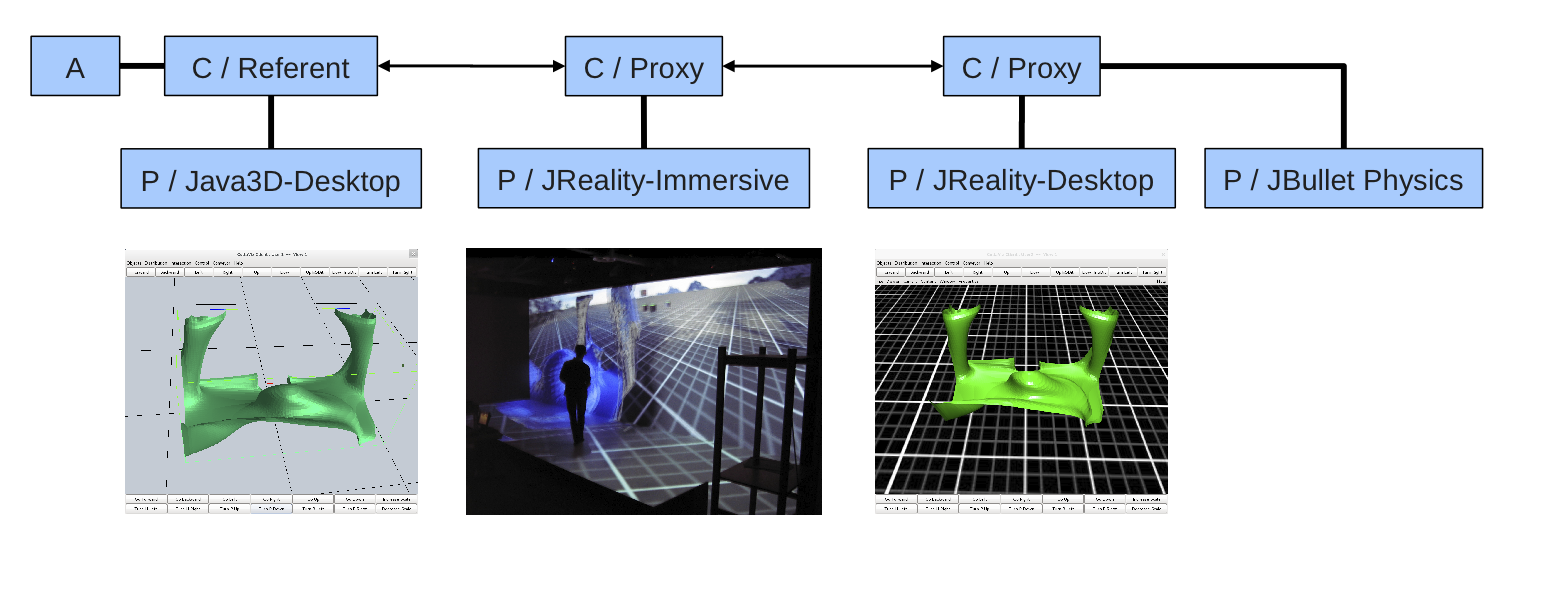Section: New Results
Collaborative work in CVE's
The immersive interactive virtual cabin (IIVC)
Participants : Thierry Duval [contact] , Valérie Gouranton [contact] , Alain Chauffaut, Bruno Arnaldi, Cédric Fleury, Thi Thuong Huyen Nguyen, Georges Dumont.
We are still improving the architecture of our Immersive Interactive Virtual Cabin to improve the user's immersion with all his real tools and so to make the design and the use of 3D interaction techniques easier, and to make possible to use them in various contexts, either for different kinds of applications, or with different kinds of physical input devices.
The IIVC is now fully implemented in our two VR platforms: OpenMASK 5.1 and Collaviz 8.1.2 .
We have used the IIVC in order to provide efficient collaboration between users in a guiding task, allowing a guiding user to be fully aware of what the main user was seeing in the virtual universe and of what were the physical constraints of this user. We made a first prototype that made it possible to participate to the 3DUI 2012 contest [26] , then we made further experiments showing the interest of the approach, these results will be presented in [25] . We also proposed to use the IIVC to enhance the communication between users sharing a virtual universe by helping them to build a cognitive model of the other users' environment [19]
Generic architecture for 3D interoperability
Participants : Thierry Duval [contact] , Valérie Gouranton, Cédric Fleury, Rozenn Bouville Berthelot, Bruno Arnaldi.
Our goal is to allow software developers to build 3D interactive and collaborative environments without bothering with the 3D graphics API they are using. This work is the achievement of the IIVC software architecture. We have proposed PAC-C3D (Figure 7 ), a new software architectural model for collaborative 3D applications, in order to provide a higher abstraction for designing 3D virtual objects, and in order to provide interoperability, making it possible to share a virtual universe between heterogeneous 3D viewers.
|
We also study how to offer interoperability between virtual objects that are loaded in the same virtual environment but that are described using different formats. This is why we have proposed a generic architecture for enabling interoperability between 3D formats (Figure 8 ), the Scene Graph Adapter. Our SGA is now able to allow events coming from a 3D format to act upon data provided in another format, such as X3D events operating on Collada data, and makes also it possible to compose different format files [15] .
|
Collaborative interaction model
Participants : Bruno Arnaldi, Valérie Gouranton [contact] , Andrés Saraos Luna.
Our work ponders on collaborative interactions in Collaborative Virtual Environments for Training, with an emphasis on collaborative interactions between Real Humans and Virtual Humans working as a team. We propose [30] a new collaborative interaction model and from it construct a set of tools to describe and define such collaborative interactions [34] .




